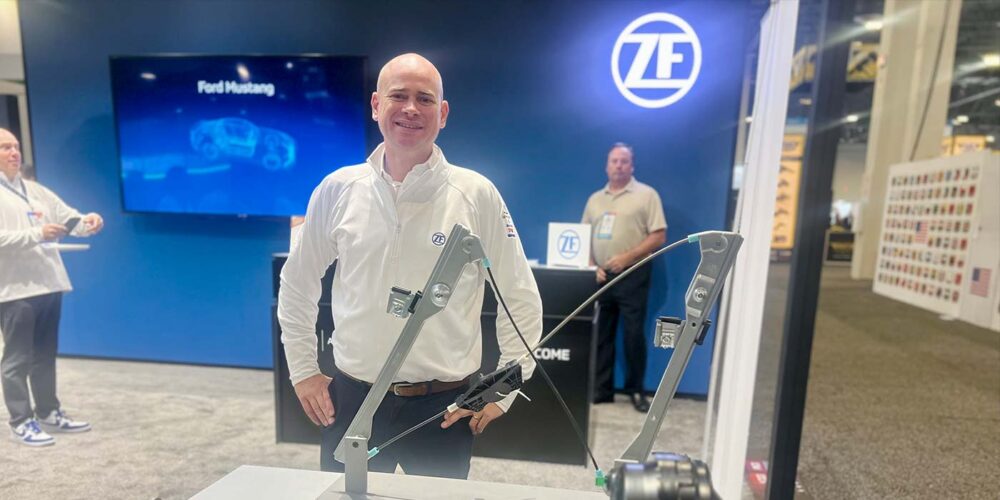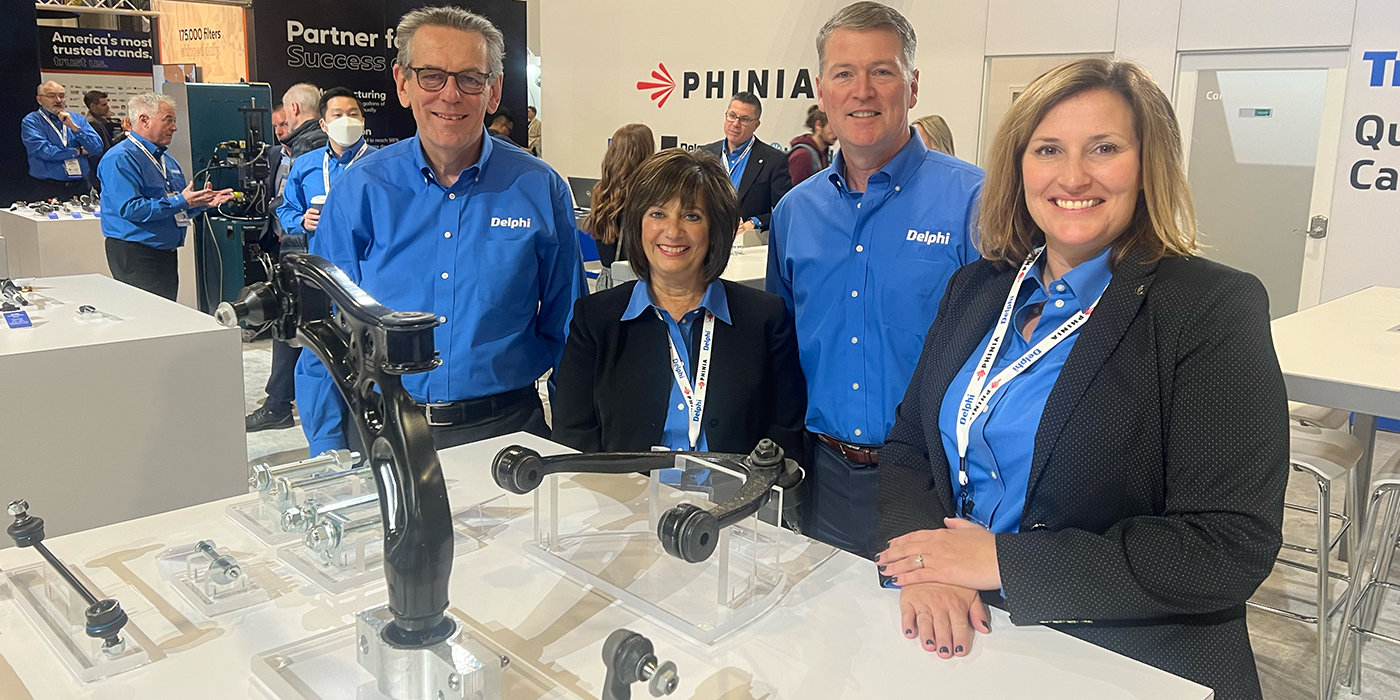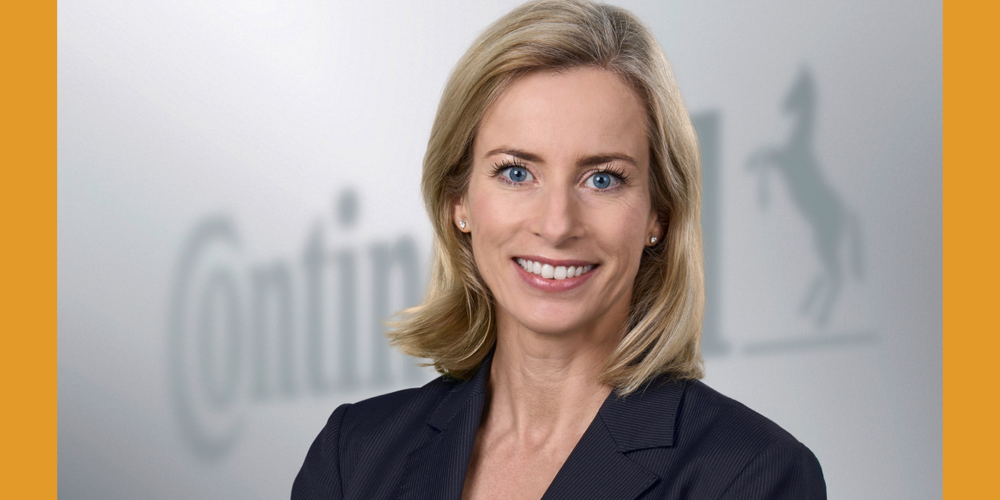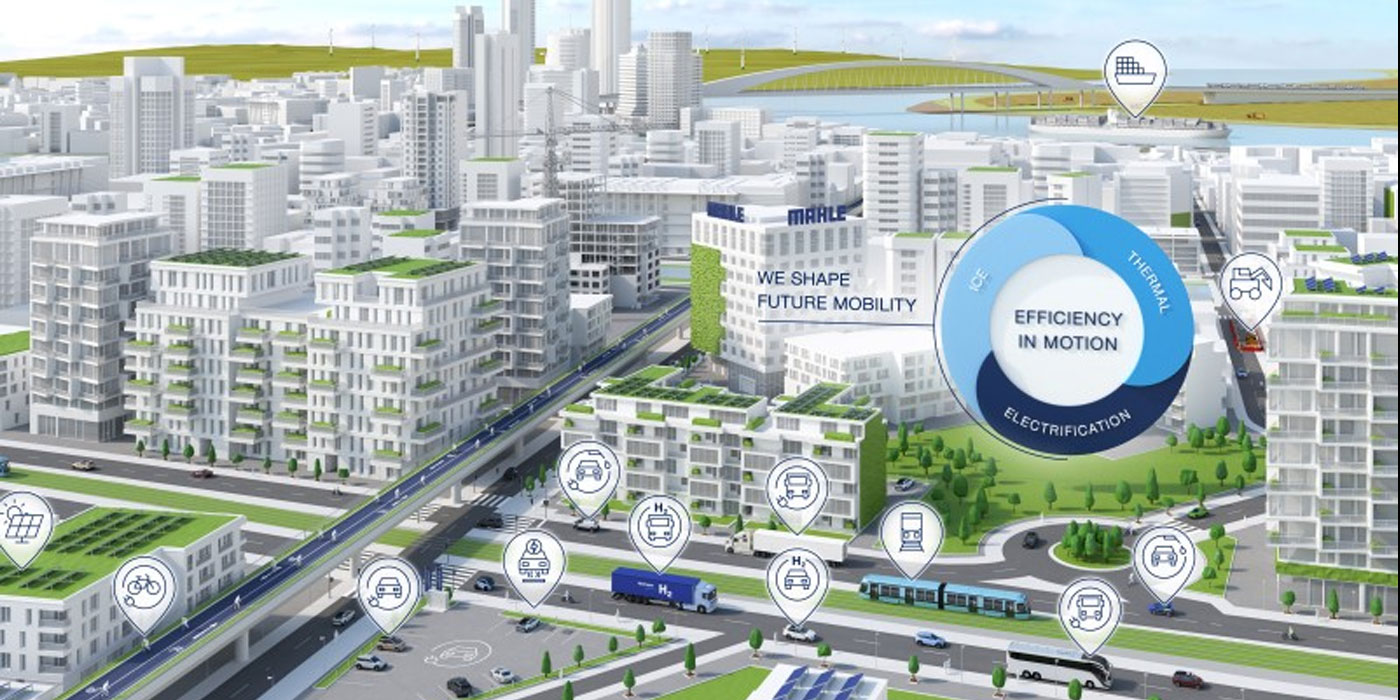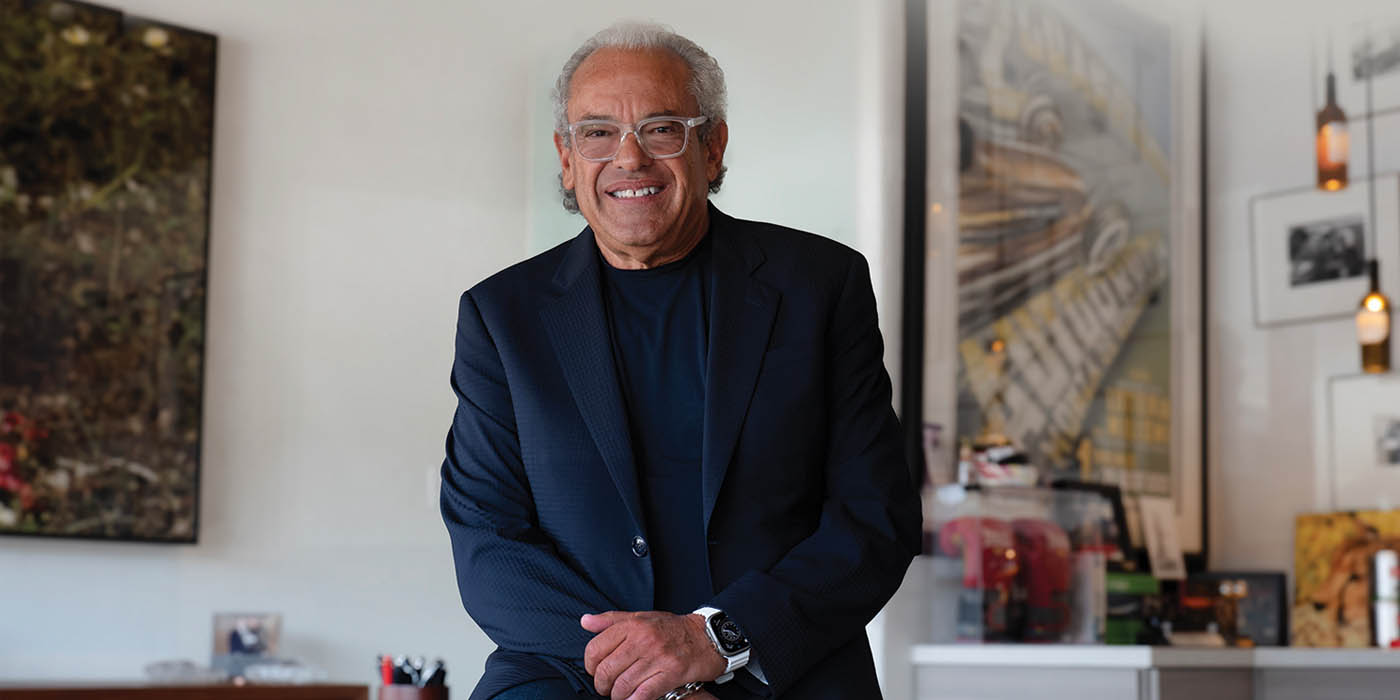Late-model vehicles, new models, and those that haven’t even been introduced yet—these are the three categories auto parts manufacturers are looking at when charting out their strategic roadmaps. Add to that sustainability initiatives and getting training out to installers, and parts suppliers are at a busy intersection of innovation and strategy.
For ZF, providing all of this and more comes at an advantage thanks to its OE relationships and acquisitions over the years, which has shaped the company into a full supplier of systems for passenger cars, commercial vehicles and industrial technology. At the 2023 AAPEX Show, AMN sat down with Ben Smart, vice president for ZF Aftermarket in North America, to learn about the company’s new products, its strategy around the advent of EVs, its emphasis on remanufacturing and its focus areas for 2024.
Read the full interview below.
AMN: What products are ZF highlighting here at AAPEX?
Smart: Our brake boosters and brake master cylinders are new to the North American market. We have quite a large presence in other parts of the world in this category, and we felt that we have a place in the Americas in the aftermarket segment as an OE provider of these parts. It also complements our existing brake offering.
Then, something you don’t see every day is a window regulator. We saw that there was a gap in the market and demand for that here, and we’ve leveraged our OE supply and our market presence in Europe to bring this to the Americas. We’ve introduced this product and will be building up coverage for it this year.
We also have our standard lifeguard fluid, which is for transmissions, but we’ve now introduced it for electric drive lines as well. They have different demands in performance and different operating temperatures. They have completely different makeups.
Another example is brake pads. We’ve recognized that brake pads for EVs have very different demands compared to ICE vehicles, so we introduced electric blue brake pads a year or so ago. These brake pads are a little quieter. The generative braking process is different—temperatures are higher and the vehicles are generally heavier. The demands of the pads are different than a traditional ICE vehicle. The experience for the consumer will be better if you have something specific for their EV.
AMN: So for many product lines, is ZF is looking at them and asking, can this perform better for an EV?
Smart: Absolutely. We’re very fortunate because we have an OE heritage. We’re constantly developing products for OEs, so we have visibility into the future. We work very closely with the engineers from our OE divisions to look at the lifecycle of a product. So, a product might go into the vehicle new, but how can we make sure that we can support the life cycle of it when it comes to repair, maintenance and data feedback? We’re far more integrated than we traditionally used to be because of this change in the industry.
Another example is the traditional shock absorber. We now have a sensor on it to interact with the vehicle’s ECU. It allows the vehicle to recognize the road ahead and adjust the damping so that, for example, you don’t get that sway in your vehicle when you take a curb. It contributes to a much smoother ride. What we’re seeing is more and more hard parts having the capability to interact with other hard parts to give a far more holistic picture of the vehicle’s health or the part’s health with data feedback to the vehicle owner.
We also have a new concept of a control arm that you’ll find in newer vehicles that’ll be coming into the aftermarket. Essentially, our engineers have implemented a sensor on top of the ball joint to give feedback on the movement of the ball joint, the health of it and its connection to the control arm. It feeds predictive maintenance data to the vehicle.
This is all technology that comes out in our OE capabilities as a result of our R&D. Because of our OE relationships, we don’t need to find suppliers to give us that information. For OE suppliers that have an aftermarket presence, the more complex and complicated the car gets is great for us because we have ownership of the product’s lifecycle. As a business, we are becoming more of a technology company rather than a parts company.
AMN: How is ZF balancing electric-specific or hybrid-specific product lines while still innovating for ICE vehicles?
Smart: I think the market’s got a little bit carried away with its fears around EV adoption. As I mentioned, especially in the US market, the average age of vehicles is growing. Even with the most optimistic forecasts of EV adoption, you’re still going to have 75% of vehicles on the road are going to be ICE by 2033.
We have a responsibility to provide repair solutions for those vehicles. That being said, we’re in a fortunate position that the rest of our business isn’t looking at 12 to 20-year-old vehicles. They’re looking at new vehicles. With our OE partnerships, we have visibility of those order books. We have insights into how big that market is getting and when we need to start adopting and introducing solutions into the aftermarket. It’s important to us to be first to market and a leader in these solutions, obviously at the right time. The other aspect is that owners of older vehicles should have access to the safety features such as camera technology and lane assist that new cars offer, and so we’re looking at retrofit solutions as wellIt also starts with education and certifications at the workshops. If we don’t start there, those vehicles will then be sent to dealerships or another facility, and it’s not giving consumers the opportunity for a choice in the market of where to get your vehicle repaired.
AMN: What are some initiatives ZF has in place to educate repair shops about new mobility trends and its new products?
Smart: It’s something that we strategically have been working on because, as parts get more technical, it becomes more challenging for installers to maintain the business in the independent aftermarket. We have our online training academies: the ProTech Academy for automotive and ProAcademy for commercial.
Something that we’ve been working on is education around new technologies. It helps to educate installers to ensure they are comfortable installing the product and understand what’s coming down the line. Something like an EV part, it might not be big business today, but you need to be prepared for it and make sure your shops have the right diagnostic equipment.
There’s also a safety element because the more electrified a vehicle gets, the element of safety becomes more important. You don’t want to start working on a Tesla or another electrified vehicle without shutting the right things down. So, the installer must understand what they need. High-voltage training is something we’ve been working on.
AMN: Another aspect that connects to future mobility is sustainability. Give us an update on ZF’s remanufacturing business.
Smart: One of the things that’s very important to us for our future strategy is remanufacturing. It’s very important for sustainability. In our facilities in North America—we have a large facility in Vernon Hills—we do an awful lot of transmission remanufacturing. We do full deconstruction, full repair. We turn it back into a brand-new, warranty-backed deliverable. The important part of that, which people don’t realize, is when you remanufacture a transmission, you can re-utilize 85% of the existing product.
In the market, sustainability is becoming more and more important to our customers across all channels. However, it’s not the only thing that’s important to them. With remanufacturing, an element of availability comes in because you rely less on the supply chain of newly developed products.
At the moment, we reman several parts, whether that be boosters, calipers, transmissions, etc. Certain parts are more difficult to reman than others. Currently, we’re developing remanufacturing strategies in product segments where we didn’t have remanufacturing, like e-drives and e-axles. Those products are so new to the market, but as we see wear rates of those, we will start to remanufacture them. We also have smaller pilot teams looking at battery remanufacturing and regeneration.
AMN: What are ZF’s top priorities for 2024?
Smart: In the US, remanufacturing is an absolute focus for us. We’re essentially just trying to drive more products that we can through remanufacturing and introduce them to the market. This grows our ZF remanufacturing capabilities and branches us out into non-ZF products that we can remanufacture by using our knowledge base.
We also want to make sure we’ve got solutions for future technologies, whether that be batteries, e-drives, etc.
Then another area that we’re really looking at is our commercial vehicle product lines. Now with WABCO (which ZF acquired in 2020), we have such a basket of OE product lines, and we’re looking to develop the distribution of that.
Then, across segments, we’re looking to implement the right products at the right time when it comes to ADAS. We’re the world’s largest camera supplier for the OE side of the business, and I think the top two or three in LIDAR and sensor technology. As we’ve seen that technology grow, we’re now ready to start releasing that as either retrofit—for vehicles that don’t have that solution as standard—or as a repair and maintenance product, whether that being crash repair or just due to wear.
The retrofit is a little bit more challenging to communicate out to the market. But we feel from a safety perspective and for a value-add, especially as they age…that you should be able to upgrade your safety. You shouldn’t be locked into not getting that safety because you might not be able to buy a new car. The prices of new cars now are at an all-time high, so we want to be able to offer our products to the wider market.
AMN: What are you seeing in terms of market dynamics in the industry that are impacting ZF today?
Smart: I think the market dynamics are interesting because we’re seeing a balance of affordability of products and quality control. I think the market, especially in the US, they’re looking to learn a little bit from maybe other regions of the world. If I look at Europe, they have quite strict controls on ECR-90 with brake pads. I think we might see that coming into the US market. As vehicles get older and safety is always on the top of people’s minds, I think that there might be some considerations there.
Another dynamic playing out in the market today is the challenge of getting the installers and workshops to invest in that future in terms of telematics and diagnostics, to be able to understand the vehicle in front of them and what it’s telling them. It’s constantly changing and the challenge for them is that it needs investment. Sometimes that investment doesn’t have an immediate payoff. And in our current climate of affordability and inflationary challenges, that’s difficult for these business owners. A lot of them are supporting small teams.
When is the right time to make that investment? They don’t want to be too early and have these tools sitting there and not being used and gathering dust. I think another challenge will be to have these solutions as affordable as possible to give accessibility to the installers to maintain and repair any car that comes into their shop.

